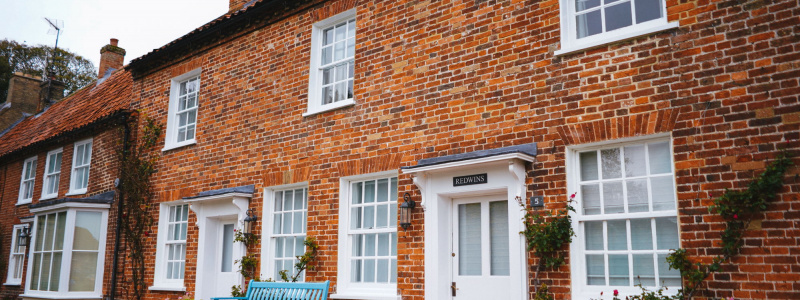Before you bid for a houses with an annex you need to carefully consider the amount of Stamp Duty Land Tax (SDLT) you will have to pay; it is complicated.
In summary the SDLT you have to pay may be magnified by 3% if the share of value attributable to the annex is too high. On the other hand in some cases the rate of SDLT to be applied may be reduced by being based on an average of the price paid for each of the house and annex.
3% surcharge
A supplemental rate of 3% SDLT affects buyers of an additional residential property. There is a common misconception that this this only affects buyers of second homes and investment properties. It can also apply on the purchase of a property that has an annex. The rules are complex; the criteria for the application of the supplemental rate depends on whether the buyer is an individual, a corporate, and the number of properties being acquired or already owned.
Where an individual buys more than one dwelling as part of the same transaction (so the main house and annex) there are two tests to determine whether the supplemental rate applies. To avoid application of the supplemental rate:
- The annex needs to be subsidiary to the main house meaning that it is within the same grounds or building as the main house; and
- The value attributable to the main house, on a just and reasonable basis, must be at least two-thirds of the consideration for the transaction. Put another way the value of the annex(es) must be one third or less (There can be more than one subsidiary dwelling without incurring the charge as long as the main house satisfies this two-thirds of transaction value test).
Multiple Dwellings Relief (MDR)
The second SDLT issue is whether MDR is available; broadly speaking this applies where a number of separate dwellings are acquired in one lot. Where the criteria for this relief are met the SDLT payable is likely to reduce as it will be calculated on the average price of the dwellings acquired rather than the total taking advantage of the lower rate bands for each dwelling.
Unfortunately MDR relief doesn’t oust the application of the 3% surcharge, ie where the buyer is a company or is an individual who owns other residential property, or the 2% surcharge for non-resident buyers.
For example if an individual were to buy a property for £2 million that comprised a house and flat annexed to it with £400,000 attributable to the flat where the buyer did not own any other dwellings at the time then the supplemental 3% charge would not apply and in principle the buyer would be able to claim MDR.
The requirement that there be “separate dwellings” means that not every annex (or other unit in the grounds) will count for this purpose; the First-tier Tribunal has denied MDR relief in respect of transactions involving annexes in three cases now where HMRC challenged on the basis that the annex was not “used or suitable for use as a single dwelling”:
- In Lovell v HMRC the property comprised a main house, a pool building including a swimming pool and open area with a shower and toilet plus a barn that had no running water but did have power and central heating.
- In Morse and Another v HMRC the property included a main house and two storey annex with bathroom, heating and external lockable doors.
- George and Another v HMRC involved a property comprising a main house with an annex including a bedroom, playroom and bathroom with the annex being accessible via patio doors from the back garden.
None of the annexes have a separate post box or were separately listed for council tax or received individual utility supplies.
In each case MDR was found not to be available on the basis that the annexes weren’t separate dwellings as they did not include “facilities for basic domestic living needs” as required by Fiander and Brower v HMRC [2021] UK UT 156. The homeowners’ attempt to rely on the definition of “dwellings” for the purpose of other taxes such as council tax and VAT were rejected. The absence of kitchen facilities was fatal in each case.
Privacy and security of the occupants of each building was also required to be an independent dwelling following the same authority; in the case of George to gain access to the annex you had to walk through the house’s main hallway or garden past the windows. The absence of a separate post box or utility supplies were not so significant factors. Heating, power and natural light were important but not sufficient in the absence of a kitchen.
It should be remembered that there are clawback provisions to MDR relief that may mean the relief is lost if the number of units is reduced within a certain period.
Conclusion
So buyers of houses with annexes may avoid application of the 3% surcharge if they come within these limits but they may not be able to avail themselves of MDR so as to reduce the SDLT rate ordinarily applicable to the house as a consequence of the annex unless it has all of the facilities required for basic domestic living needs and meets the other issues identified. Each case would need to be examined on its own merits.
A significant amount of money can be saved or lost depending on the result so it warrants being checked carefully before committing to a purchase.
